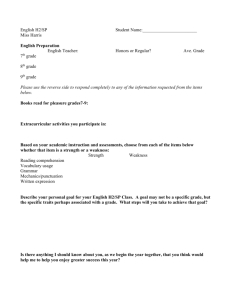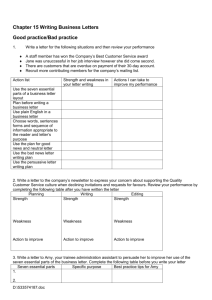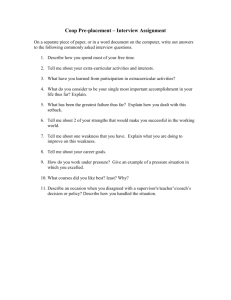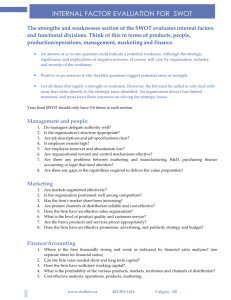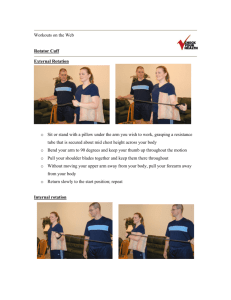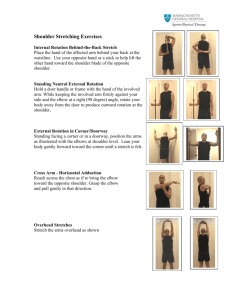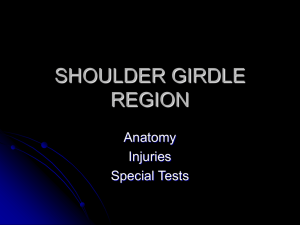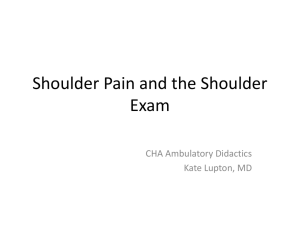You will be required to remember:
advertisement
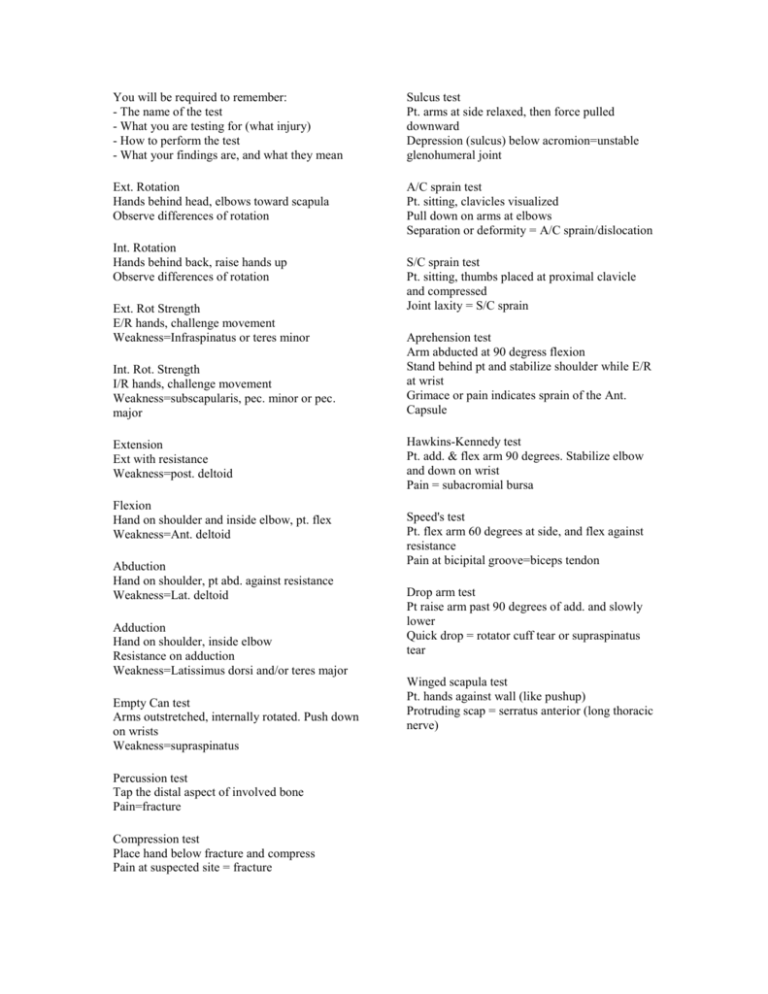
You will be required to remember: - The name of the test - What you are testing for (what injury) - How to perform the test - What your findings are, and what they mean Sulcus test Pt. arms at side relaxed, then force pulled downward Depression (sulcus) below acromion=unstable glenohumeral joint Ext. Rotation Hands behind head, elbows toward scapula Observe differences of rotation A/C sprain test Pt. sitting, clavicles visualized Pull down on arms at elbows Separation or deformity = A/C sprain/dislocation Int. Rotation Hands behind back, raise hands up Observe differences of rotation Ext. Rot Strength E/R hands, challenge movement Weakness=Infraspinatus or teres minor Int. Rot. Strength I/R hands, challenge movement Weakness=subscapularis, pec. minor or pec. major Extension Ext with resistance Weakness=post. deltoid Flexion Hand on shoulder and inside elbow, pt. flex Weakness=Ant. deltoid Abduction Hand on shoulder, pt abd. against resistance Weakness=Lat. deltoid Adduction Hand on shoulder, inside elbow Resistance on adduction Weakness=Latissimus dorsi and/or teres major Empty Can test Arms outstretched, internally rotated. Push down on wrists Weakness=supraspinatus Percussion test Tap the distal aspect of involved bone Pain=fracture Compression test Place hand below fracture and compress Pain at suspected site = fracture S/C sprain test Pt. sitting, thumbs placed at proximal clavicle and compressed Joint laxity = S/C sprain Aprehension test Arm abducted at 90 degress flexion Stand behind pt and stabilize shoulder while E/R at wrist Grimace or pain indicates sprain of the Ant. Capsule Hawkins-Kennedy test Pt. add. & flex arm 90 degrees. Stabilize elbow and down on wrist Pain = subacromial bursa Speed's test Pt. flex arm 60 degrees at side, and flex against resistance Pain at bicipital groove=biceps tendon Drop arm test Pt raise arm past 90 degrees of add. and slowly lower Quick drop = rotator cuff tear or supraspinatus tear Winged scapula test Pt. hands against wall (like pushup) Protruding scap = serratus anterior (long thoracic nerve)
